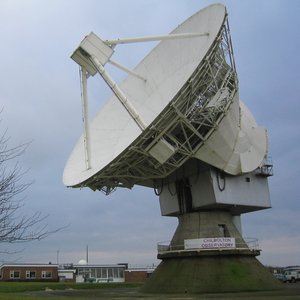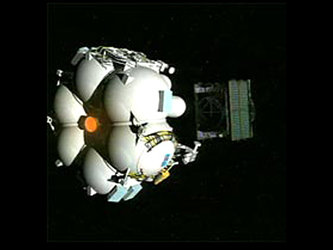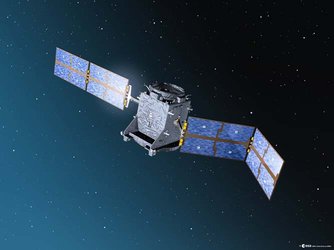One year of Galileo signals; new website opens
One year ago today,
Carried into space from the Baikonur Cosmodrome in Kazakhstan by a Soyuz launch vehicle on 28 December 2005,
This signal transmission has secured the use of the frequencies allocated to the Galileo system by the International Telecommunication Unit (ITU), achieving the primary mission for which the satellite was constructed.
The receivers that have been developed for Galileo were able to receive the first signals at ESA sites at Redu (Belgium) and Noordwijk (Netherlands), at the Chilbolton Observatory (UK) and at the Guildford (UK) mission control centre of Surrey Satellite Technology Ltd, the prime contractor for
The navigation signal has been broadcast continuously to fulfil the other important objectives of the GIOVE mission:
- verification of the critical technologies for the Galileo satellites, including the on-board Rubidium Atomic Frequency Standard (RAFS) clocks, the navigation signal generator and the chain of equipment that comprises the navigation payload
- characterisation of the novel features of the Galileo signal design, including the verification of user receivers and their resistance to interference and multi-path reception in realistic static and dynamic conditions, aiming to better estimate the effect on navigation services and future applications
- characterisation of the radiation environment of the Medium Earth Orbit (23 260 km altitude) planned for the Galileo constellation, to better understand this particular environment – particularly the radiation doses and electro-magnetic fields that could affect the design of the operational system
GIOVE Mission Segment

To complete the
The GIOVE Processing Centre computes precise orbits and clock timings for the GIOVE satellites, based on the measurements made by the global network of Galileo Experimental Sensor Stations that collect Galileo and GPS observables once per second. In the future, navigation messages will be generated and up-linked to the satellites through their control centres.
The GIOVE Processing Centre is already started to provide fascinating, first-ever experimental results that will allow risk mitigation for the operational system development in the in-orbit validation phase.
In satellite navigation, the achievable positional accuracy is driven by, among other factors, the performance of the navigation message broadcast by the satellites, the satellite clock stability, and the user’s receiver and environment. The GIOVE mission is confirming the correctness of assumptions made at the early stages of the Galileo system design using actual measurements performed in orbit. This confirmation shows that the service performance requirements can be met and the overall Galileo system design is on track.
New website

Information on the GIOVE mission is now accessible at www.giove.esa.int. This new website provides general information to the public and measurement data and core products to registered external users who are collaborating with ESA on the mission experiments.
Galileo is a joint initiative of the European Commission (EC) and ESA. The EC is responsible for the political dimension and the high-level mission definition. ESA’s responsibility covers the technology development as well as design, development and in-orbit validation of the space and ground elements.















 Germany
Germany
 Austria
Austria
 Belgium
Belgium
 Denmark
Denmark
 Spain
Spain
 Estonia
Estonia
 Finland
Finland
 France
France
 Greece
Greece
 Hungary
Hungary
 Ireland
Ireland
 Italy
Italy
 Luxembourg
Luxembourg
 Norway
Norway
 The Netherlands
The Netherlands
 Poland
Poland
 Portugal
Portugal
 Czechia
Czechia
 Romania
Romania
 United Kingdom
United Kingdom
 Slovenia
Slovenia
 Sweden
Sweden
 Switzerland
Switzerland
































